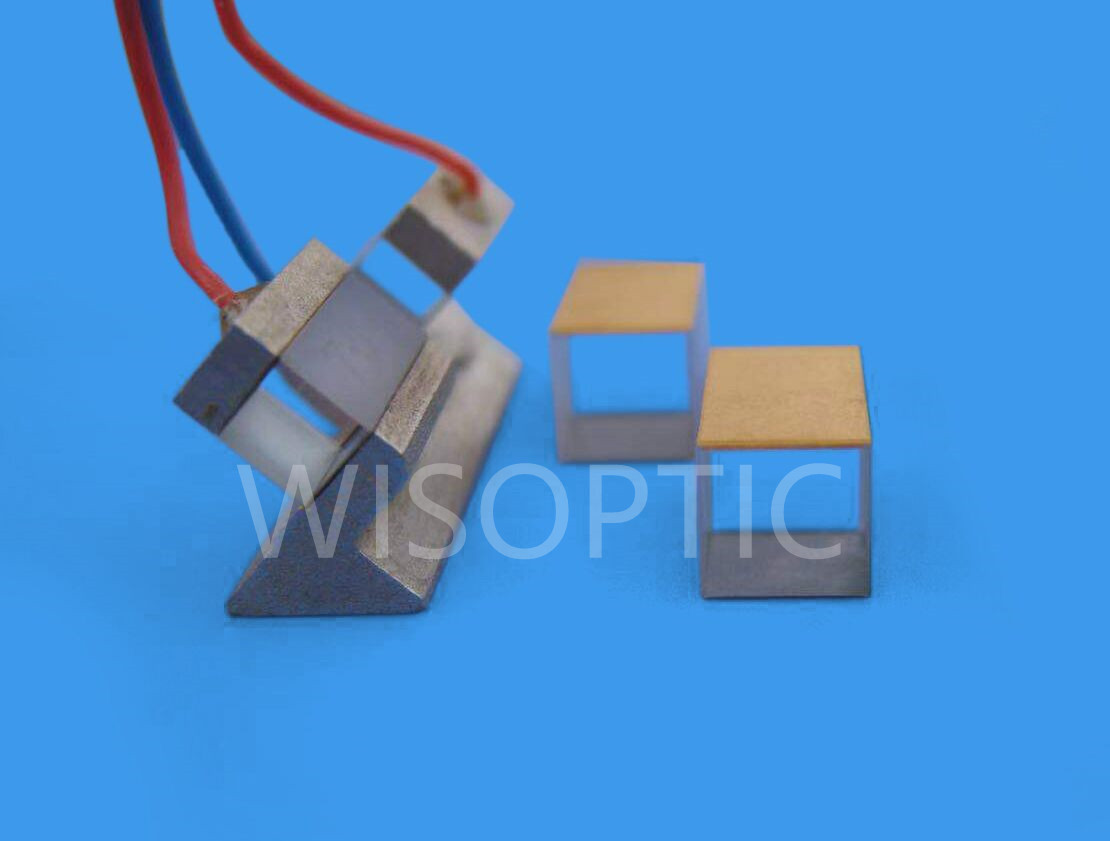In 1976, Zumsteg et al. used a hydrothermal method to grow a rubidium titanyl phosphate (RbTiOPO4, referred to as RTP) crystal. The RTP crystal is an orthorhombic system, mm2 point group, Pna21 space group, has comprehensive advantages of large electro-optical coefficient, high light damage threshold, low conductivity, wide transmission range, non-deliquescent, low insertion loss, and can be used for high repetition frequency work (up to 100 kHz), etc. And there will be no gray marks under strong laser irradiation. In recent years, it has become a popular material for preparing electro-optic Q-switches, especially suitable for high repetition rate laser systems.
The raw materials of RTP decompose when they are melted, and can not be grown by conventional melt pulling methods. Usually, fluxes are used to reduce the melting point. Due to the addition of a large amount of flux in the raw materials, it’s very tough to grow RTP with large-size and high-quality. In 1990 Wang Jiyang and others used the self-service flux method to obtain a colorless, complete and uniform RTP single crystal of 15 mm×44 mm×34 mm, and conducted a systematic study on its performance. In 1992 Oseledchik et al. used a similar self-service flux method to grow RTP crystals with size of 30 mm×40 mm×60 mm and high laser damage threshold. In 2002 Kannan et al. used a small amount of MoO3 (0.002 mol%) as the flux in the top-seed method to grow high-quality RTP crystals with a size of about 20 mm. In 2010 Roth and Tseitlin used [100] and [010] direction seeds, respectively, to grow large-size RTP using top-seed method.
Compared with KTP crystals whose preparation methods and electro-optical properties are similar, the resistivity of RTP crystals is 2 to 3 orders of magnitude higher (108 Ω·cm), so RTP crystals can be used as E-O Q-switching applications without electrolytic damage problems. In 2008 Shaldin et al. used the top-seed method to grow a single-domain RTP crystal with resistivity of about 0.5×1012 Ω·cm, which is very beneficial for E-O Q-switches with larger clear aperture. In 2015 Zhou Haitao et al. reported that RTP crystals with a-axis length greater than 20 mm were grown by hydrothermal method, and the resistivity was 1011~1012 Ω·cm. Since the RTP crystal is a biaxial crystal, it is different from LN crystal and DKDP crystal when used as an E-O Q- switch. One RTP in the pair must be rotated 90°in the direction of light to compensate for the natural birefringence. This design not only requires high optical uniformity of the crystal itself, but also requires the length of the two crystals to be as close as possible, to acquire higher extinction ratio of the Q-switch.
As an excellent E-O Q-switching material with high-repetition frequency, RTP crystals subject to the limitation of size which is not possible for big clear aperture (the maximum aperture of commercial products is only 6 mm). Therefore, the preparation of RTP crystals with large size and high quality as well as the matching technique of RTP pairs still need large amount of research work.
Post time: Oct-21-2021

